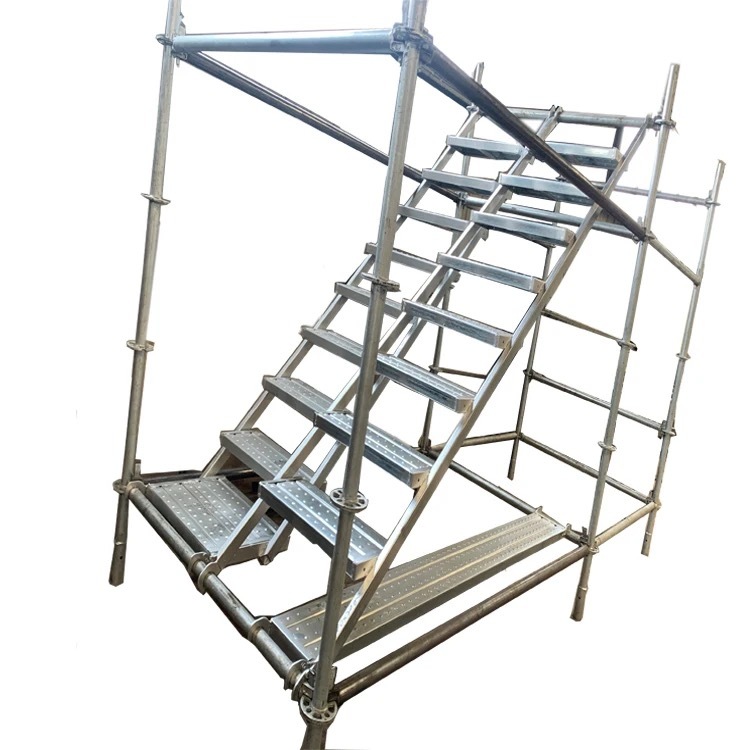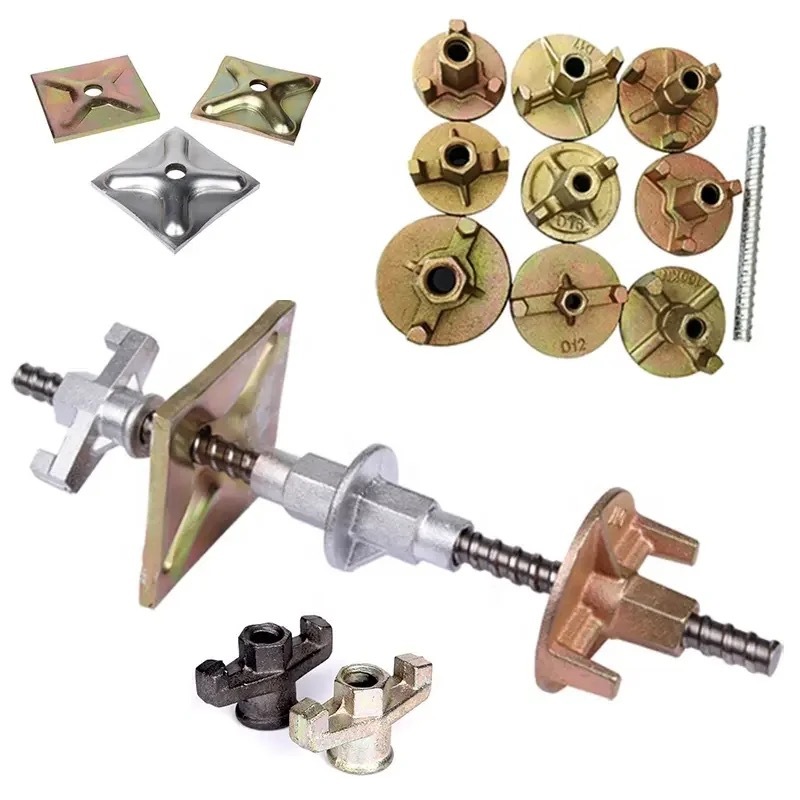Mobile Scaffolding: Enhancing Team Collaboration on Job Sites
Mobile Scaffolding: Enhancing Team Collaboration on Job Sites Table of Contents Understanding Mobile Scaffolding Benefits of Mobile Scaffolding in Construction Projects The Impact of Mobile Scaffolding on Team Collaboration Best Practices for Using Mobile Scaffolding Innovative Designs of Mobile Scaffolding Safety Considerations When Using Mobile Scaffolding Future Tre

Mobile Scaffolding: Enhancing Team Collaboration on Job Sites
Table of Contents
- Understanding Mobile Scaffolding
- Benefits of Mobile Scaffolding in Construction Projects
- The Impact of Mobile Scaffolding on Team Collaboration
- Best Practices for Using Mobile Scaffolding
- Innovative Designs of Mobile Scaffolding
- Safety Considerations When Using Mobile Scaffolding
- Future Trends in Mobile Scaffolding and Team Collaboration
- Frequently Asked Questions
Understanding Mobile Scaffolding
Mobile scaffolding refers to versatile, movable platforms used in construction and maintenance tasks, allowing workers to access elevated areas safely and efficiently. Unlike traditional scaffolding, mobile scaffolds offer the added advantage of mobility, enabling quick repositioning as project requirements change. These structures typically consist of lightweight materials, making them easy to transport and assemble on various job sites.
Constructed with a combination of vertical posts, horizontal beams, and wheels, mobile scaffolding provides a stable and robust platform for various tasks, including painting, plastering, and electrical work. The adjustable height feature ensures that workers can optimize their work environment, adapting to the unique needs of each project.
Benefits of Mobile Scaffolding in Construction Projects
The utilization of mobile scaffolding in construction projects presents numerous advantages that significantly enhance team collaboration and overall project efficiency. Below are some key benefits:
1. Improved Accessibility
Mobile scaffolding allows teams to reach high or hard-to-access areas without the need for complex setups. This increased accessibility ensures that workers can perform their tasks without unnecessary delays, allowing for smoother workflow and better collaboration.
2. Enhanced Safety
Safety is paramount on any job site. Mobile scaffolding is designed with safety features such as guardrails and stable locking mechanisms. These elements reduce the risk of accidents and injuries, allowing team members to focus on their tasks and collaborate more effectively.
3. Time Efficiency
The ease of assembly and mobility of mobile scaffolding significantly reduces setup time compared to traditional scaffolding. Teams can quickly reposition scaffolds as needed, minimizing downtime and fostering a more collaborative working environment.
4. Cost-Effectiveness
Investing in mobile scaffolding can lead to substantial cost savings. By reducing labor costs associated with setup and teardown, as well as minimizing project delays, companies can allocate resources more effectively and optimize team collaboration.
5. Versatility for Different Applications
Mobile scaffolding can be used in various applications, from residential renovations to large-scale commercial projects. This versatility ensures that teams can utilize the same equipment across different jobs, promoting better communication and collaboration among team members.
The Impact of Mobile Scaffolding on Team Collaboration
Team collaboration is crucial for the success of any construction project. Mobile scaffolding enhances this collaboration in several ways:
1. Encouraging Open Communication
With easy access to elevated areas, team members can communicate more effectively, regardless of their location on the job site. This access fosters open dialogue and helps resolve issues in real-time, enhancing collaboration.
2. Promoting Team Morale
When workers feel safe and equipped with the right tools, their morale increases. High morale translates to better teamwork, as individuals are more willing to support one another and contribute to a positive work environment.
3. Facilitating Training and Skill Development
Mobile scaffolding provides an opportunity for workers to learn and develop new skills. As team members collaborate and share knowledge, they become more adept at utilizing the equipment and understanding best practices, ultimately enhancing the team's overall capability.
4. Streamlining Task Management
By utilizing mobile scaffolding, project managers can allocate tasks more effectively. With everyone able to access the required tools and materials, team members can work on various aspects of the project simultaneously, optimizing productivity and collaboration.
Best Practices for Using Mobile Scaffolding
To maximize the benefits of mobile scaffolding, it's essential to follow best practices:
1. Conduct Regular Inspections
Before using mobile scaffolding, always inspect it for any damage or wear. Regular maintenance checks ensure that the equipment remains safe and functional, fostering a secure working environment.
2. Provide Proper Training
Training team members on the safe and effective use of mobile scaffolding is crucial. When workers understand how to assemble, operate, and disassemble the scaffolding correctly, it enhances safety and collaboration.
3. Use Appropriate Safety Gear
Ensure that all team members wear the necessary safety gear when working on or around mobile scaffolding. This equipment includes hard hats, harnesses, and non-slip footwear, which promote safety and teamwork.
4. Develop a Clear Communication Plan
Establishing a communication plan that outlines roles and responsibilities can help streamline collaboration. When everyone understands their tasks and how they fit into the larger project, it fosters effective teamwork.
5. Encourage Feedback
Encouraging team members to share their experiences and suggestions regarding mobile scaffolding usage can lead to improvements in workflow and safety. A culture of feedback promotes continuous enhancement of team collaboration.
Innovative Designs of Mobile Scaffolding
Recent advancements in mobile scaffolding design have introduced various features that further enhance team collaboration and project efficiency:
1. Modular Scaffolding Systems
Modular scaffolding systems offer flexibility in design and assembly. These systems allow teams to create customized scaffolding setups tailored to specific project needs, promoting collaboration through adaptability.
2. Lightweight Materials
The use of lightweight materials, such as aluminum and composite materials, has revolutionized mobile scaffolding design. These materials enhance portability and ease of use, making it easier for teams to collaborate and reposition scaffolds as needed.
3. Integrated Technology
Many modern mobile scaffolding solutions incorporate technology, such as GPS tracking and integrated safety monitoring systems. These innovations help teams manage equipment more effectively, further enhancing collaboration.
4. Ergonomic Design
Ergonomically designed scaffolding not only improves comfort for workers but also encourages productivity. When workers can navigate scaffolding easily, they can collaborate more effectively and complete tasks efficiently.
Safety Considerations When Using Mobile Scaffolding
Safety should always be a priority when utilizing mobile scaffolding. Here are essential safety considerations:
1. Load Capacity Awareness
Understanding the load capacity of mobile scaffolding is critical. Exceeding weight limits can compromise stability and safety, leading to accidents. Always review manufacturer guidelines and ensure compliance.
2. Ground Stability
Before setting up mobile scaffolding, evaluate the ground conditions. Uneven or soft ground can pose risks. Ensure the scaffold is placed on a stable surface to maintain safety and encourage teamwork.
3. Proper Assembly Techniques
Following the manufacturer’s instructions for assembly is vital. Improper assembly can lead to structural failures and put workers at risk. Training team members on best practices reinforces safety and collaboration.
4. Weather Considerations
Adverse weather conditions can impact the safety of mobile scaffolding. Teams should monitor weather forecasts and avoid using scaffolding during high winds, rain, or storms to ensure safe working conditions.
Future Trends in Mobile Scaffolding and Team Collaboration
As construction technologies evolve, mobile scaffolding continues to adapt. Here are some future trends:
1. Smart Scaffolding Solutions
The integration of smart technology into scaffolding systems will enhance monitoring and management. Sensors can track usage data and provide real-time feedback, improving safety and collaboration.
2. Sustainability Practices
With a growing focus on sustainability, manufacturers are developing eco-friendly scaffolding materials and practices. This trend will encourage teams to collaborate on environmentally responsible projects.
3. Customization and Personalization
The demand for customizable scaffolding solutions will continue to rise. Teams will benefit from tailored designs that meet specific project needs, enhancing efficiency and collaboration.
4. Enhanced Training Programs
As technology advances, training programs will evolve to include virtual and augmented reality simulations, allowing workers to experience scaffolding setups safely and effectively. This training will improve skills and foster better collaboration.
Frequently Asked Questions
1. What is mobile scaffolding?
Mobile scaffolding refers to movable platforms that provide workers with safe access to elevated areas on construction sites, designed for easy transport and assembly.
2. How does mobile scaffolding improve safety?
Mobile scaffolding features built-in safety elements such as guardrails and stable locking mechanisms, reducing the risk of accidents and injuries on job sites.
3. Can mobile scaffolding be used for any construction project?
Yes, mobile scaffolding is versatile and can be utilized for various applications, including residential renovations, commercial projects, and maintenance tasks.
4. What are the best practices for using mobile scaffolding?
Best practices include conducting regular inspections, providing proper training, using appropriate safety gear, developing a communication plan, and encouraging feedback from team members.
5. What are the future trends in mobile scaffolding?
Future trends include the integration of smart technology, sustainability practices, increased customization, and enhanced training programs leveraging virtual reality.
Conclusion
In the dynamic world of construction, mobile scaffolding emerges as a transformative solution that enhances team collaboration on job sites. By providing safe, efficient access to elevated areas, mobile scaffolding not only improves productivity but also fosters a culture of collaboration among team members. As we look to the future, embracing innovative designs, best practices, and a commitment to safety will ensure that mobile scaffolding continues to play a pivotal role in construction projects worldwide. Investing in mobile scaffolding is not just about equipment; it’s about empowering teams to work together, optimizing workflows, and ultimately achieving project success.
Key words:
PREVIOUS:
PRODUCT SEARCH
Search And Quickly Find The Products You Need
With advantages in technology, quality, and service, the company is steadily advancing in the industry, continuously providing high-quality hydraulic rubber products and services to global customers, demonstrating strong development potential and broad market prospects.










